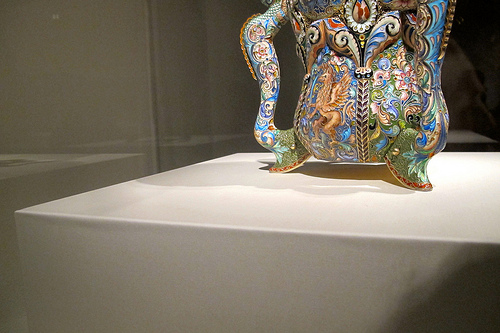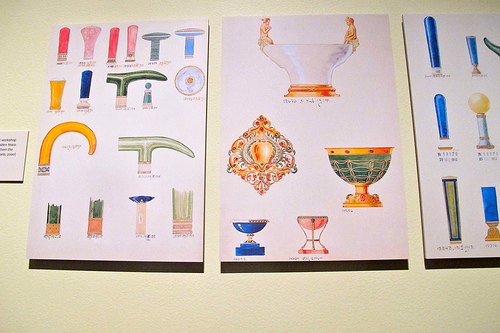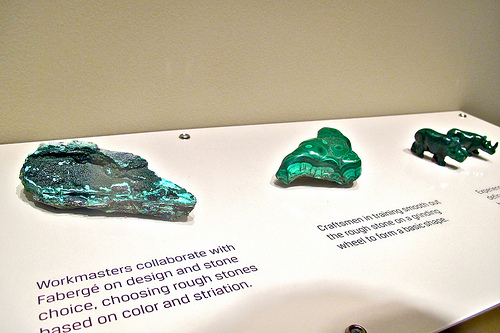
“Fabergé: The Rise and Fall” brings exquisite craftsmanship to the DIA
Since the successful passage of the County Art Institute Authority millage in Wayne, Oakland and Macomb Counties, the Detroit Institute of Arts (DIA) has extended free general admission to any residents of these counties who present a valid ID. It’s a terrific gift and an afternoon well-spent, but attendees would do well to parlay these savings into a special exhibition ticket and experience, “Fabergé: The Rise and Fall,” which opened in late October and remains on display through Monday, January 21, 2013. The exhibit features more than 200 precious objects from the Virginia Museum of Fine Arts, home to the largest collection of Fabergé in the United States. Detail from an enamel pitcher, showing just a fraction of the elaborate decorative elements to each piece produced by Fabergé.
In an era that has come to newly embrace artisan crafts and workmanship for its own sake, Fabergé might well feel at home amongst contemporary craftsman. That his exquisite level of workmanship was perhaps not solely for its own sake, so much as for the sake of Russian aristocracy does nothing to diminish the extraordinary execution, preciousness of materials, and attention to detail lavished upon what may collectively be considered relatively useless objects.
Apparently, Russian royalty was real on cane toppers and parasol handles.
Though the pieces on display speak for themselves, personifying the highest ideals of master craftsmanship, intrinsic beauty and design ingenuity (as each of the notorious Fabergé eggs contains a clever device or delightful surprise of some kind), the subtext of these objects as conveyance of affection and regard within the Russian royal family reveals a surprisingly touching narrative. Aside from the eggs for which Fabergé is best known, there are dozens of pocket-sized portraits on display; though most of us do not spend thousands of dollars and innumerable man hours creating insanely detailed lacquered and embossed frames for them, these were essentially the Russian royalty equivalent of wallet photos, and carried a kind of sentimental value that was highly relatable, even to this plebeian.
The exhibit contained a number of interactive stations, where attendees could touch materials and design their own Fabergé eggs.
The eggs themselves, of course, are of incomparable beauty, with sometimes years of effort devoted to the creation of a single piece, but again, they served as the annual Easter gift from the Tzar to his loved ones, and must therefore be considered equally as rich in sentiment as they are in substance.
Either way, a marvelous gift to be enjoyed by all who seek admission.
Recent Content
-
Artsarticle ·
-
Artsarticle ·
-
Artsarticle ·



